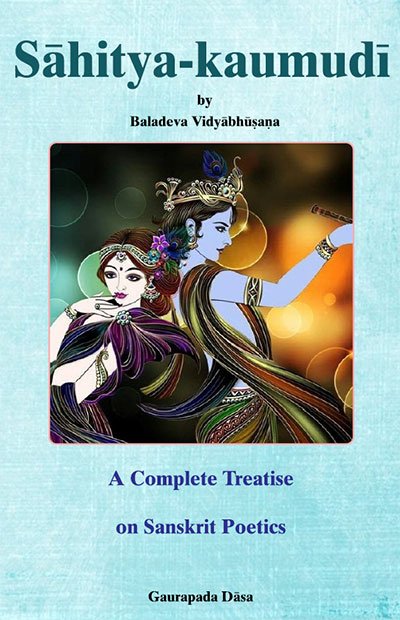Sahitya-kaumudi by Baladeva Vidyabhushana
by Gaurapada Dāsa | 2015 | 234,703 words
Baladeva Vidyabhusana’s Sahitya-kaumudi covers all aspects of poetical theory except the topic of dramaturgy. All the definitions of poetical concepts are taken from Mammata’s Kavya-prakasha, the most authoritative work on Sanskrit poetical rhetoric. Baladeva Vidyabhushana added the eleventh chapter, where he expounds additional ornaments from Visv...
Text 7.37
(15) [This shows avimṛṣṭa-vidheyāṃśa (not giving proper eminence to an important aspect of the predicate) in a sentence (i.e. in more than one compound):]
कृष्ण त्वं राज-पुत्रो’सि साम्प्रतं तव रक्षणम् |
न पुनः कुल-रामाणां वस्त्र-भूषादि-मोषणम् ||
kṛṣṇa tvaṃ rāja-putro’si sāmprataṃ tava rakṣaṇam |
na punaḥ kula-rāmāṇāṃ vastra-bhūṣādi-moṣaṇam ||
O Kṛṣṇa, You are the son of a king. Now You should protect the beautiful women of the community. Do not again steal their clothes and ornaments.
atra rājñaḥ kulasya ceti sambandho vidheya utkarṣa-dhī-hetutvāt. samāsena tu tasyāvaśyaṃ nyag-bhāvaḥ.
Here the genitive case in the sense of relation in rāja-putra should be stated: rājasya putraḥ (the king’s son) and similarly in kula-rāmāṇām, which means: kulasya rāmāṇām (of the beautiful women of the community), because in that way there is a cause of perceiving an eminence in the predicate. By compounding them, however, it obviously becomes lessened.
